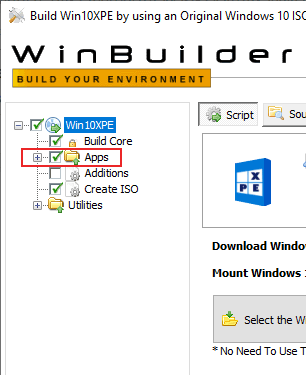
=įormat quick fs=fat32 label= "Windows PE"įormat fs=ntfs quick label= "Other files" Here are the diskpart commands you will need to create multiple partitions on your USB drive. Optional Burn a DVD or CD: In Windows Explorer, right-click the ISO file, select Burn disc image > Burn, and follow the prompts.Ĭreate Multiple Partitions on Your USB drive MakeWinPEMedia /ISO C:\WinPE_amd64 C:\WinPE_amd64\WinPE_amd64.iso Use MakeWinPEMedia with the /ISO option to create an ISO file containing the Windows PE files. Use MakeWinPEMedia with the /UFD option to format and install Windows PE to the USB flash drive, specifying the USB key's drive letter: See Create a multipartition USB drive for instructions. If you want to be able to store files larger than 4GB on your WinPE USB drive, you can create a multipartition USB drive that has an additional partition formatted as NTFS. MakeWinPEMedia will format your WinPE drive as FAT32. Optional You can format your USB key prior to running MakeWinPEMedia. Now that you now have a set of working files, you can use MakeWinPEMedia to build bootable WinPE media. After you add drivers or other customizations to Windows PE, see WinPE: Optimize and shrink the image to help reduce the boot time.

Optimize WinPE: Recommended for devices with limited RAM and storage (for example, 1GB RAM/16GB storage). See WinPE: Mount and Customize: High Performance. Note, our sample deployment scripts already set this scheme automatically. Set the power scheme to high-performance. PowerShell scripts are not included in this lab. To learn more, see WinPE: Adding Windows PowerShell support to Windows PE. To learn more, see WinPE: Add drivers.Īdd PowerShell scripting support. (WinPE includes generic video and network drivers, but in some cases, additional drivers are needed to show the screen or connect to the network.). To learn more, see: WinPE: mount and customize.Īdd a video or network driver. If you're going to be capturing an FFU at the end of the lab, apply KB4048955 to your WinPE image. Only add additional packages when necessary.Īdd an update.

Note: when you add more packages to WinPE, it slows WinPE performance and boot time. For more information about copype, see Copype command-line options. Run copype to create a working copy of the Windows PE files. Start the Deployment and Imaging Tools Environment as an administrator. No matter what type of media you're going to create, the first thing to do is create a working set of WinPE files on your system. Once done downloading install Windows ADK and Windows PE add-on. Download the correct Windows ADK and Windows PE add-on for the version of Windows 10/11 you are working with. We first need to download Windows ADK software in order to build a WinPe ISO or create a bootable USBĬlick on the link below to the Microsoft Download site for Windows ADK.


 0 kommentar(er)
0 kommentar(er)
